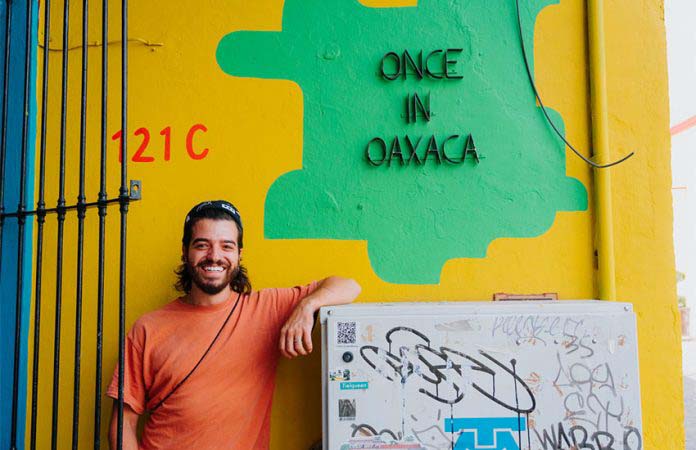photo: Barry Austin Photography | DigitalVision | Getty Images
by Adam Echelman
CalMatters
Many college students rely on federal student aid to cover expenses, but increasingly complicated laws and poor communication have made those dollars harder to come by for some adult students.
Thousands of adult Californians without a high school diploma want to take college classes. Unfortunately, those classes aren’t free, and the lack of a high school diploma cuts off access to most financial aid.
The good news is, there’s a fix. The bad news is most students don’t know about the fix, and most college officials don’t understand the laws surrounding it.
Federal law has a special clause that allows students lacking a high school diploma to access financial aid money they would otherwise miss. Known as the Ability to Benefit, the provision opens up federal financial aid to adults without high school degrees who enroll in GED and college classes simultaneously.
California community colleges also stand to benefit financially from the law because it could allow schools to boost enrollment and the number of students on federal aid, both of which are tied to the state’s new college funding formula.
More than 4 million Californians lack a high school degree and roughly 340,000 of those adults were taking some form of adult education in 2021, according to the California Community College Chancellor’s office.
At least that many adults could be eligible for this federal aid, but in 2016, just shy of 58,000 students in California actually received federal grants or loans associated with it. The numbers have dropped every year since, and in 2021, just more than 30,000 California students participated, according to the U.S. Department of Education. That means as many as 90% of eligible adult students weren’t taking advantage of this aid.
The decline is the result of a complicated balancing act. On the one hand, the federal government has noted a history of poor oversight and “abuse” of Ability to Benefit, especially by for-profit colleges. On the other hand, more regulation has left community colleges feeling confused and uninformed.
Still, Bradley Custer, a senior policy analyst for higher education at the Center for American Progress, said use of the aid has room to grow.
“There’s no compelling reason why we couldn’t at least get back to 2016 and prior enrollment,” he said.
Locked out of loans and grants
In California, community college tuition is free for qualifying low-income students who apply, but even for those who get the fee waiver, it’s just a fraction of the many costs related to attending college. Textbooks, transportation, and food add an average of roughly $12,000 a year.
That’s why the federal government offers flexible aid for college students — and through Ability to Benefit, adults without high school degrees can access that money, too. A federal Pell grant, for instance, currently provides as much as $6,895 a year for qualifying students, money that can be spent on things like childcare or rent.
Joe Villa, 67, needs that money. He has six children from two marriages, no high school diploma, and a criminal record that makes even a simple job interview challenging. But he won’t give up.
While serving a 10-year sentence at High Desert State Prison in Susanville, Villa attempted to get his GED, but the program closed before he could finish.
Then in 2019, Villa was standing beside a prison employee when another inmate charged at the two of them. Villa intervened, saving the employee’s life. Gov. Gavin Newsom commuted Villa’s sentence, and he was released in April 2020 — just weeks after the state locked down due to the COVID-19 pandemic.
“There was no employment because of COVID, and I’m thinking, perhaps this is the best time to re-educate myself and get my degree,” he said. Through Saddleback Community College in Mission Viejo, Villa promptly enrolled in both a GED program and a number of college classes. CalMatters found Villa through a Saddleback administrator reference.
He tried to apply for federal student aid, but didn’t get far since he doesn’t have a high school diploma and didn’t know about the Ability to Benefit provision.
Qualifying for the Ability to Benefit exception is not easy. A student must first enroll in a program to obtain their high school degree or equivalent and take six credits of college courses. Alternatively, they can pass a special exam.
Finally, students who want the federal dollars must receive certain kinds of counseling support and can only take a certain set of courses, as interpreted by their college.
Villa checks nearly every box. He is currently enrolled in both a GED class and has already taken more than six credits worth of courses at Saddleback in the hope of getting his associates degree and then transferring to four-year university to study cinematography.
But as of 2020, Saddleback College no longer offers students aid through Ability to Benefit.
Fixing a ‘scam,’ facing consequences
It’s a trend, said Judy Mortrude, senior technical advisor at the National College Transition Network of World Education, Inc., a Boston-based nonprofit that helps community colleges.
In 1991, Congress put Ability to Benefit into the law and slowly added regulations that explained how students could qualify, like through an exam or by taking six credits. In 2012, Congress cut the funding, only to restore it fully in 2016. Then Congress required that colleges offer counseling and career training to these students and that they restrict them to a certain set of classes and majors that align with the local economy.
Whereas the original rule had only been about the student’s eligibility, the 2016 regulations asked colleges to perform certain services, and colleges didn’t know how to interpret it, Mortrude said.
“The chain of communication is poor,” said Naomi Castro, a senior director with the Career Ladders Projects, a nonprofit research group founded by the California Community Colleges Board of Governors. She said that many financial aid directors at community colleges didn’t even know that Congress restarted the program in 2016.
Saddleback allowed students who enrolled prior to 2012 to get aid at any point, since they qualified through the old law, but the college never implemented the 2016 regulations, meaning students such as Villa have yet to benefit.
The challenge, said Karima Feldhus, an academic administrator at Saddleback, is that the college lacks “an eligible list of careers” according to the 2016 regulations. As to why the college waited years to adopt the regulations , she said she didn’t know and referred CalMatters to the director of the financial aid office and the dean of enrollment. Neither person responded to requests for comment.
Nor did San Jose City College implement Ability to Benefit when it restarted in 2016, according to Takeo Kubo, the financial aid director.
San Jose City College spokesperson Daniel Garza said the 2016 law required “significant curriculum development efforts,” which he noted can be “quite an undertaking” at any school. He said he was not aware of what efforts the college made to consider making the necessary curriculum changes when the new regulations came out.
Some community colleges, including the four Sacramento-area ones in the Los Rios Community College District, did adapt to the new regulations. Those colleges currently have 42 students who receive aid through Ability to Benefit out of a total of 780 students in the system without a high school diploma.
While community colleges have increasingly shied away from Ability to Benefit over the years, for-profit colleges have leaned in.
Nationally, participation at public and private nonprofit colleges has dropped by more than half since 2016 while usage at private for-profit schools has risen, according to the most recent data from the U.S. Department of Education. The department did not respond to requests for recent statewide data.
For-profit and nonprofit use different processes, too. The department data shows public and private nonprofit colleges generally have students qualify for Ability to Benefit by taking six credits worth of classes. At for-profit colleges, nearly every student qualifies for it through an exam.
“It’s sort of a scam how they are getting bucket loads of people to hit a cut score on an exam who somehow couldn’t pass the GED test,” said Mortrude.
The department created many of the new regulations to clamp down on such “predatory behavior,” she said.
A third way
While students generally qualify for Ability to Benefit through the two national pathways, federal law also allows states to develop their own processes.
In 2019, Mortrude, Castro, and other college leaders sent a proposal to the Community College Chancellor’s Office on how California could set its own such process. Illinois, Iowa, Minnesota, Mississippi, Washington and Wisconsin have already done it.
In Wisconsin, for example, adult students at some technical colleges can qualify for aid by participating in an orientation and by working with a tutor or academic counselor, among other criteria.
The individual community colleges are responsible for implementing the Ability to Benefit provision for students, said Paul Feist, a vice chancellor for the California Community College Chancellor’s Office, in a statement.
He said the office will explore creating a “state defined process” akin to what other states have done. The office did not provide a timeline for a new state process.
This month, a committee of Saddleback administrators came together to figure out the federal regulations with the goal of offering the Ability to Benefit aid this fall.
If they succeed, Villa has a list of expenses he hopes his aid can cover. First, he’s late on child support payments. He wants a new apartment and after putting on some weight during the COVID pandemic, he needs new clothes that fit.
Adam Echelman covers California’s community colleges in partnership with Open Campus, a nonprofit newsroom focused on higher education.










